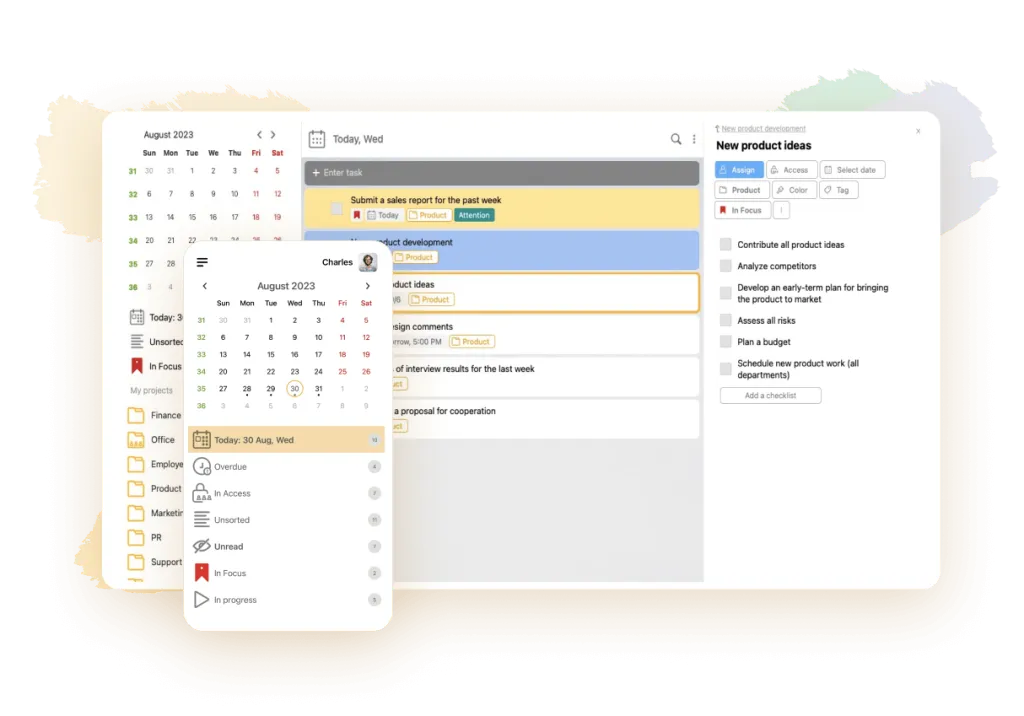
Ted Scott
January 15, 2024
All products invented by man, drawings of houses and buildings, models and constructions, technical means are projects. Someone once had the idea to create them in the form in which they exist now. In fact, the project is the main driving force that changes and transforms our world for the better.
The effectiveness of project management directly depends on the correct choice of management methods and impacts. But, what does a project mean and what is it? The choice of management techniques and methods depends on understanding its meaning. Today we will understand how this definition is interpreted in different areas of activity. What goals does each project pursue? What organizational methods to use for its implementation?
What is the project

The Big Encyclopedic Dictionary says that the concept of “project” comes from the Latin language from the word “projectus” - “thrown, coming forward”. It is a temporary endeavor that results in the creation of a new, exclusive product, service or result. A project can exist separately, or be part of a set of programs. Their results can be tangible or intangible. The distinguishing features of any project are:
-
Limited in time. It has a beginning and an end, its own life cycle including several stages and phases. The number of stages may vary depending on the specifics and complexity. For example, opening a store is a project, and selling goods in it is a process.
-
Uniqueness. Calculating a company’s budget is a project, and paying employees monthly is also a process.
-
A demonstrable result. This can be a completely new, non-existent product or a change to an existing product or process.
A limited amount of resources is provided for all projects. It is realized step by step according to a preliminary plan. All activities and actions are called project activities. By nature, a project can be universal or original, unique. It develops in certain areas, in one way or another affecting the main characteristics of the project. These include:
-
Socio-cultural environment (local customs, traditions, ethical and moral values);
-
International and political environment (state of the economy in the region, availability of resources, political sentiment and influences);
-
Ecology, Environment.
Any changes in the external environment affect the progress of the project. They can be both positive and negative.
Aims and objectives of the project

Project managers are in charge of project management. They are guided by a handbook that contains rules and standards for working with projects, the Project Management Body Of Knowledge or PMBOK, adaptable to any type of enterprise.
It is the responsibility of project management to achieve all the goals set. They are roughly divided into three categories:
-
A primary, strategic goal.
-
Objectives requiring mandatory achievement.
-
Desirable goals to fulfill.
The main goal shows how successful the project is. It is what the project was designed for. It is formulated together with the mission. For example, the creation of new software for mobile devices is the key objective, and the mission is the problem that the developed application should solve. The description of the goal and the theme of the project can be recorded in the presentation.
Obligatory goals include intermediate stages, without which the main result cannot be achieved. In the example of software development, these are concept, code writing, testing and other stages that are aimed at creating the final product. Desirable goals do not affect the final result, but make it better. In our case, these are various additional options that make the software easier to use.
The SMART approach is used to formulate project objectives. According to this methodology, objectives should meet five criteria:
-
Specific;
-
Measurable;
-
Achievable;
-
Relevant to the company’s overall strategy;
-
Time-bound.
Based on the objectives, the method under which the project will be developed is approved. It can be:
-
Iterative (with repetitive approaches). It implies parallel work on tasks and their adjustment. Each life phase of such a project consists of repeating sub-cycles: design → implementation → analysis → adjustment.
-
Spiral. When a new project is designed on the basis of already existing prototypes with simultaneous planning of “new spirals”.
-
Incremental, with the decomposition of large scale projects into smaller and less complex tasks.
Classification of projects
Projects vary in activity, structure, size, duration, complexity and nature:
| Area | Social; Economic; Technical; Organizational; Mixed. |
|---|---|
| Type of structure | Mono (individual); Complex (consisting of several projects); Megaproject (includes large scale projects united in a holistic system). |
| Duration | Short-term (up to 3 years); Medium-term (3 - 5 years); Long-term (more than 5 years). |
| Complexity | Simple; Medium; Complex. |
| Size | Small; Medium; Large; Very Large. |
| Character | Investment; Scientific Research; Education, Training; Mixed. |
Projects are also considered in the form of sets of design and construction documentation. They are developed according to the following scheme:
-
The result of the development is a package of documents.
-
On their basis, the task at hand is realized.
-
As a result of performing a task, there is a final material - a product, a material object.
Such schemes are used in the construction of buildings, structures, roads, technological lines.
Popular project management methodologies
Any project consists of the following stages:
-
Initiating or deciding to establish.
-
Planning, which includes formulating goals and strategy.
-
Execution, with task allocation and execution.
-
Controls, to evaluate the success of the actions performed.
-
Completions or closings.
Competent project management is not an easy task, especially if a large team is working on it, so its activities need to be organized and directed in the “right” direction. For this purpose, special methodologies are used in the project, including a kind of “rules of the game”, which must be observed by all participants. For example:
-
Agile technologies that imply agile management. Small teams work, and each team performs its own task.
-
Scrum framework assumes division of work into separate time intervals - sprints with daily organization of rallies by a Scrum master. This methodology is more popular in the IT sphere.
-
Waterfall or cascade technique is based on the sequential execution of all the steps.
-
The Kanban methodology, which is based on a whiteboard with task cards, provides high-quality visualization of all work processes.
Effective project management with LeaderTask

Many companies use special digital systems for project management. They provide control over the team’s activities at every stage. LeaderTask software product is one of them, which combines the capabilities of a planner, a daily planner and a powerful project management system.
The application is convenient to use for managing individual and collective projects. The service includes all possible time management techniques, a set of tools for effective project management, including a task scheduler and Kanban boards. With its help, you can organize coordinated work in the project, both in the office and remotely. It allows you to share any kind of files with colleagues on the project: for example, it can be a text, voice message, image or video. The application will timely remind you about a new event or approaching deadline. It will show the performance of each performer on an informative graph. It will help you to complete all the work on the project in a timely manner, which will help you to prevent deadlines from being missed and track the progress of all tasks.
Conclusion
Projects vary in scope, value, timeframe, structure and nature. They are implemented in different areas, including IT, construction, healthcare or education. Such successful achievement of the goals of each project helps the business to move to a new stage of development. The company gets additional profit and invaluable experience for the realization of new ideas. For this purpose, it is important to choose the right management methods and tools.








